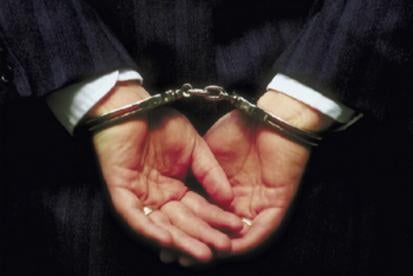Suppliers of good and services (“trade creditors”) generally have no duty to determine whether their customers are operating an illegal enterprise. However a recent Fifth Circuit opinion presents an unprecedented “claw-back” risk facing trade creditors who unknowingly provide goods and services to a “Ponzi-scheme” enterprise.
The Janvey Opinion
In Janvey v. The Golf Channel, 13-11305 (5th Cir., March 11, 2015) (the “Janvey Opinion”), the Fifth Circuit Court of Appeals held that The Golf Channel (“GC”) is required to return the $5.9 million it received from the Stanford Financial (“Stanford”) on account of marketing services provided by GC for Stanford.
The underlying facts were relatively undisputed. In October, 2006, Stanford entered into a two year contract with GC, obligating GC to perform a range of marketing services, including providing airtime for 682 commercials per year. GC is not affiliated with Stanford, their agreement was arms-length and its pricing terms were within the range of prices that buyers of television advertising services would be required to pay in the market. Stanford paid GC $5.9 million pursuant to the agreement. However, unbeknownst to GC, Stanford was a Ponzi-scheme, now regarded as one of the largest in U.S. history.
The Janvey Opinion concludes that the $5.9 million of payments made by Stanford to GC under the agreement may be avoided pursuant to the Texas Uniform Fraudulent Transfer Act (“TUFTA”). TUFTA has adopted most of the provisions of the Uniform Fraudulent Transfer Act (“UFTA”). In many courts, proving that a transferor operated as a Ponzi-scheme establishes the fraudulent intent behind the transfers it made. This is sometimes called the “Ponzi-scheme presumption”. However, even where a transfer is fraudulent under TUFTA, a creditor cannot avoid the transfer if the transferee proves two elements: (1) that it took the transfer in good faith; and (2) that, in return for the transfer, it gave the transferor something of “reasonably equivalent value.”
In the proceeding before the Fifth Circuit, the parties agreed that the $5.9 million transfer to GC was fraudulent under the “actual intent” test as a result of the Ponzi-scheme presumption. The parties also stipulated that GC had received the payments in “good faith.” Thus, the only open issue was whether GC provided Stanford something of “reasonably equivalent value.”
The Fifth Circuit rejected GC’s argument that the advertising services, which were provided under the terms of an arms-length agreement at prevailing market prices, was sufficient. Instead, the Court agreed with the argument advanced by the Stanford receiver that because Stanford was an illegal Ponzi-scheme, its creditors received nothing of value as a result of GC’s advertising services.
The Fifth Circuit held “we measure value ‘from the standpoint of the creditors,’ not from that of a buyer in in the market place.” Janvey Opinion, page 7. Thus, the fact that a buyer of advertising services would be required in the marketplace to have paid something akin to the $5.9 million for the services was rendered irrelevant as a matter of law. In reaching its conclusion, the Court relied heavily upon the official comments to the UFTA’s definition of value, in particular the following text.
“‘Value’ is to be determined in light of the purpose of the Act to protect a debtor’s estate from being depleted to the prejudice of the debtor’s unsecured creditors. Consideration having no utility from a creditor’s viewpoint does not satisfy the statutory definition.” [Emphasis added]
As a result of the Ponzi-scheme presumption, all transfers out of a Ponzi-scheme are presumed to have been made with actual intent to defraud. How then does one measure the benefit of goods and services from the “viewpoint of creditors” of a Ponzi-scheme? Consider the plight of the unknowing caterer who provides food for a party thrown for the Ponzi-scheme’s employees. What about the office supply company that provides paperclips used by the Ponzi-scheme to assemble fraudulent documents? In a sense, all providers of goods and services to a Ponzi-scheme only add “fuel to the fire” rather than benefiting defrauded investors.
The Ponzi-scheme presumption must have limitations, lest it swallow every payment made to ordinary vendors. Recognizing the potential harshness of its “perspective of creditors” test, the Janvey Opinion suggests a limitation: “Hypothetically, one can imagine an electricity provider putting on evidence that its services helped preserve the building in which the debtor operated, preventing the building’s deterioration to the benefit of the debtor’s creditors.” Janvey Opinion, page 8. This text suggest a “preserve the asset” exception might be recognized in future cases. However attempting to prove that a trade creditor falls within such exception may well result in expensive litigation entailing speculative testimony as to how its particular service “preserved assets” for other creditors.
Fraud: An Alternative Defense?
Courts have construed the UFTA and Bankruptcy Code provisions in a manner that protects the payments received by defrauded investors on account of their original principal investment amount. The general rule adopted by the federal circuit courts is that the “return of the principal amount” of the defrauded investor’s investment constitutes “value” under the UFTA. Courts have recognized that defrauded investors have a claim for fraud against the debtor arising as of the time of the initial investment. These courts consider the repayment of the investor’s original principal as a satisfaction of an antecedent debt, namely the fraud claim based debt.
It can be argued that when an innocent supplier provides goods and services to a Ponzi-scheme, the supplier does so as a result of the Ponzi-scheme’s fraud in creating a perception that it is a legitimate business. A bona fide supplier would not have provided goods and services had it known of its customer’s fraud. Thus, at the time of supplier’s contracting with the Ponzi-scheme, a tort action for fraud arguably accrues in favor of the supplier. Under this alternative theory, the Ponzi-scheme’s payment to the supplier represents a payment on an antecedent debt within the UFTA definition of “value” given as it has been construed in the defrauded investor cases. In future litigation, suppliers of goods and services should consider pleading fraud, as this alternative theory may provide a basis to distinguish their case from the holding of the Janvey Opinion.
Conclusion
The Janvey Opinion presents an unprecedented interpretation of the UFTA’s definition of “value.” The potential impact of the Janvey Opinion is far reaching because the UFTA has been adopted in 43 states, and its definition of “value” is identical to that found in Section 548 the Bankruptcy Code. Trade creditors would be well-advised to know who they are doing business with, since even honest trade creditors could be subject to claw-back claims if it turns out they are dealing with a Ponzi-scheme enterprise.




 i
i

